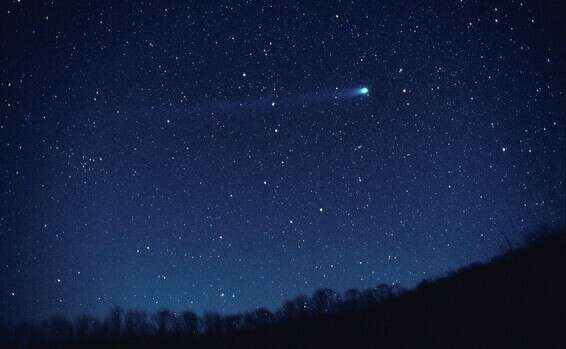Examination of meteorite residues that landed on Earth in the 1960s revealed stellar dust older than the Earth's
The oldest material. Comet in the night sky // Illustration: Getty Images
Scientists analyzing a meteorite that fell to Earth in the 1960s have discovered the oldest material ever found on Earth. These are dust grains that are 7.5 billion years old. Those star dust grains were created in the stars that came to life many, many years before the birth of our solar system. A team of researchers described the process in the Journal of the National Academy of Sciences.
When suns die, particles of them splash into space. These "pre-solar" particles actually "recycle" as they accumulate in new suns, planets, moons and meteorites. "These are solid swatches of stars, real star dust," said BBC lead researcher Philip Hack, associate professor at the University of Chicago, and curator of the Field Museum in the city.
A team of researchers from the United States and Switzerland analyzed 40 such grains, found in the Marchison meteorite, which fell in Australia in 1969. Genica Greer, a research associate at the University of Chicago, explains the process: Initially, the meteorite fragments are crushed into powder, then the particles are separated to form a kind of acid-dissolved ointment, which leaves only the "star dust" clean.
The researchers performed the age measurement by examining the duration of dust exposure to cosmic rays in space. For those unfamiliar with it, cosmic rays are high-energy particles that pass through our galaxy and are capable of passing through solid matter.
Some of these rays interact with the material in which they encounter the creation of new foundations. The longer the exposure, the more elements they create. The researchers used a neon isotope (Ne-21) to date the granules.
As mentioned, some of the grains turned out to be the earliest known to man. Based on the interaction of the rays with the grains, most of them were found to be between 4.6 and 4.9 billion years old. In comparison, our Sun is 4.6 billion years old, while the Earth is 4.5 billion years old. The age of some of the particles examined is 7.5 billion years, which is about three billion years longer than our sun.

